The History & Sights of Sagada
We went on a trip to Sagada, Mt. Province last December. It was a 3-day trip with Byaheros PH, the same group travel agency we booked for our Ilocos trip in 2019. We actually also inquired with another group travel agency, but because we loved our Ilocos trip with Byaheros PH, we decided to book with them again for our family trip in 2023.
If you’re not familiar with group travels, it’s a budget trip wherein the expenses for the trip are split between you and other travelers, making it ideally much more affordable than when you travel on your own.
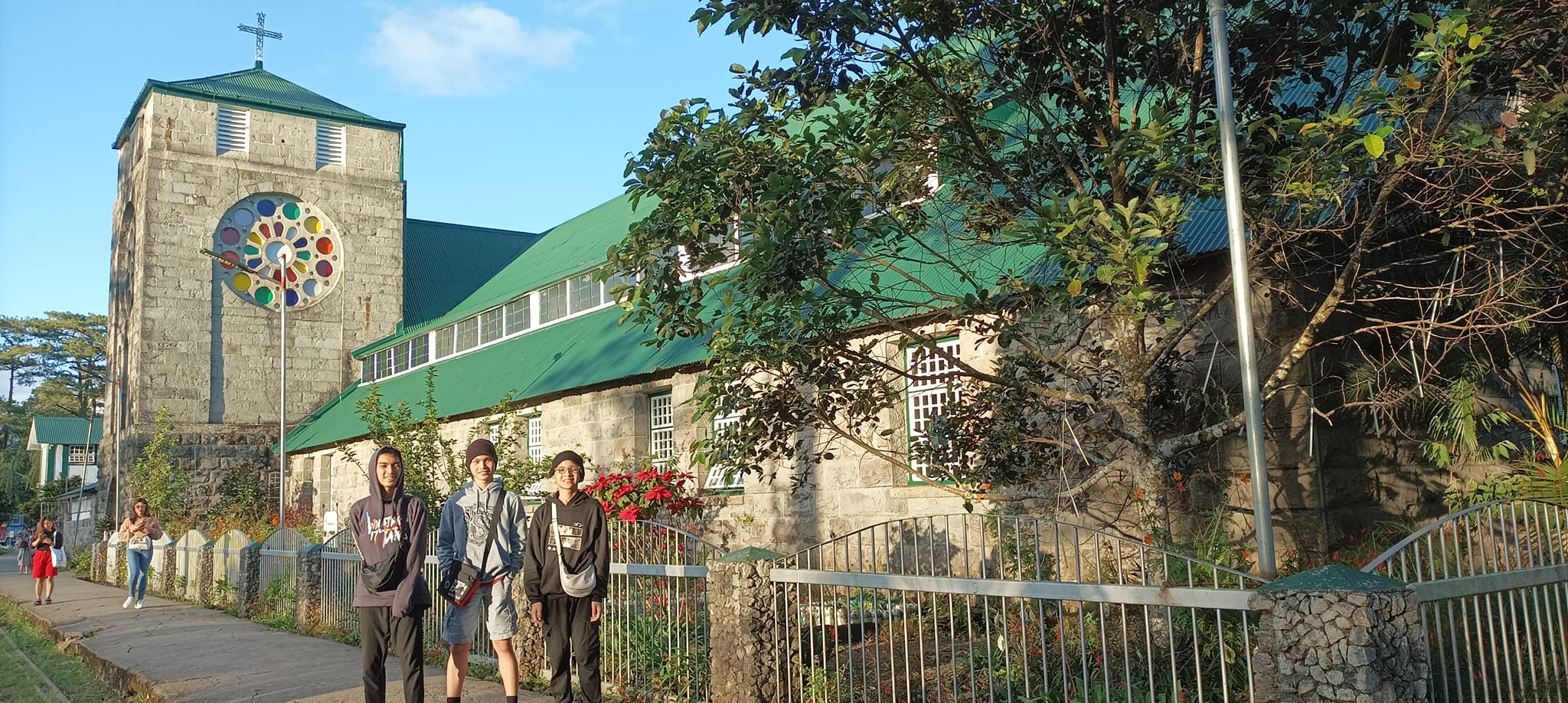
Just so you know, our group consisted of joiners that registered with different travel agencies. I recently found out that this is what they do to make sure that trips will push through. A group trip must have at least 12-14 joiners for each group for the agency to profit, so these small agencies work together to combine their signups to complete that number and minimize their loss.
For this one, we paid a total of Php 16,995 for all five of us. This covered the van that would take us to three locations: Banaue, Sagada and Baguio, the driver’s fees, and our accommodation in Sagada.
Unlike our Ilocos trip, the total fee does not include breakfasts. It also does not include the other meals, environmental fees, guide fees, and other fees.
The actual destination for this booking was Sagada where we stayed for two nights, but we passed by and made a couple of stops in Banaue – a local restaurant where we had our breakfast and the view site for Banaue Rice Terraces — the main reason why we chose this trip over other options. Lukas has always wanted to see this wonder and we thought it would be a perfect time to grant his wish.
Baguio was only intended to be a side trip on the way home. We were looking forward to see the Northern Blossoms in Atok, but that they are closed on Sundays was overlooked by this trip’s organizer.
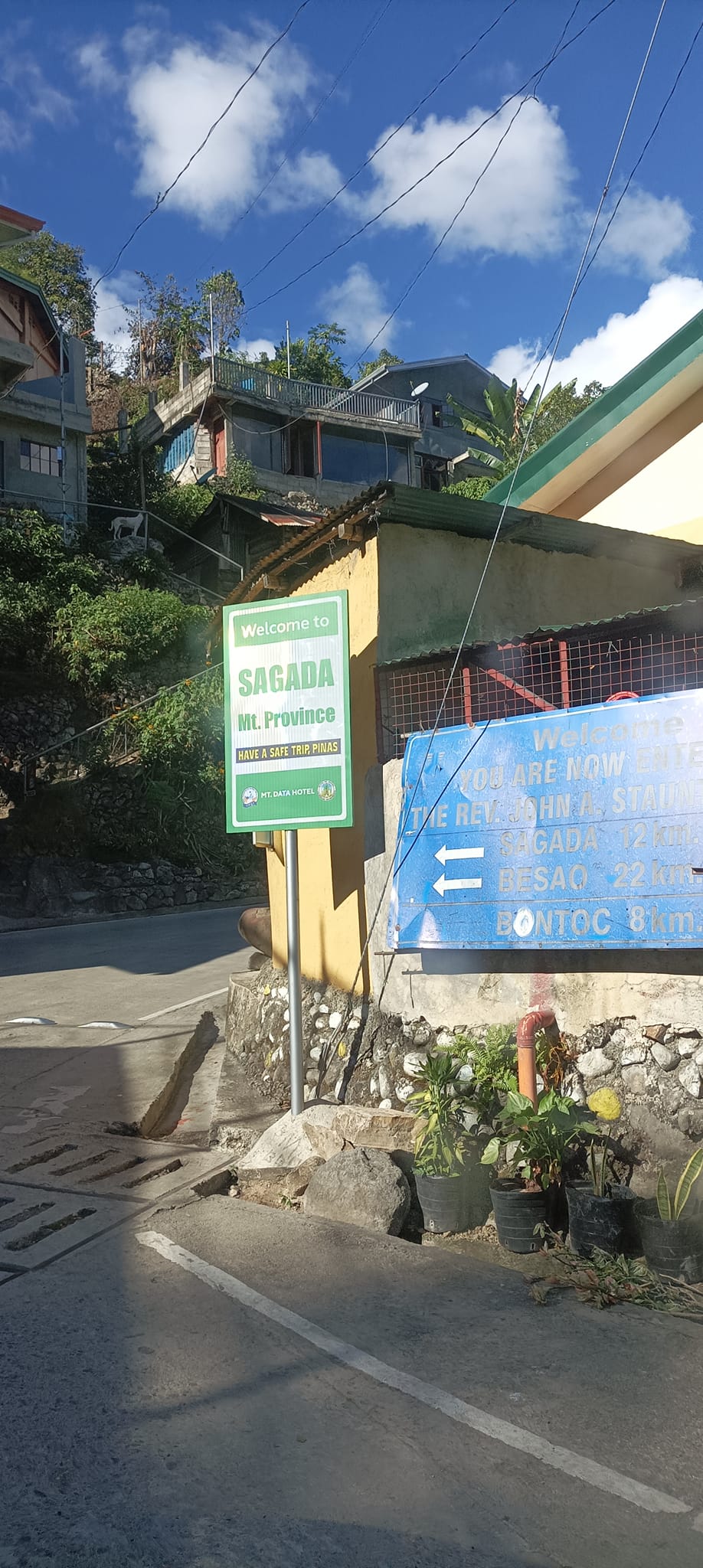
Here are the sites that we were able to visit in Sagada proper:
Church of St. Mary the Virgin
Paytokan Walk/Echo Valley/Anglican Cemetery/Hanging Coffins
Sea of Clouds
Marlboro Blue Soil
Sagada Pottery
Sagada Weaving
Ganduyan Museum
Cafe by the Clouds (Upside down House Cafe)
Even as we were planning to join this trip, Jay and I already decided that we were not going to join the cave tours because we heard so many stories from friends on how risky cave spelunking was, and we simply could not risk the boys getting injured because of it.
As some of you know, our kids are dance trainees, so an injury would render them unable to train for weeks, or even months.
I did, however, felt a bit of regret afterwards. We learned too late that there was a difference between Sagada Cave Connection and spelunking at Sumaging Cave, which was supposedly the easiest one in the place.
Sumaguing Cave is still a 40-foot drop, but we were told that it’s not as difficult as the caves you have to go through when you sign up for the Cave Connection. And we were with a good, friendly group on this trip. It was the kind of group that looked out for each other, so, we would have been more comfortable and confident to do spelunking with them.
The local tour guides assigned to us – Albert and Nico – also seemed very reliable, that I felt that we shouldn’t have passed up on the chance. Sayang!
Oh well, there were still a lot to see in Sagada. I have two other blogs about Sagada coming up, but let me start with a few sites that helped us get to know the history, culture and customs of the locals.
Church of St. Mary the Virgin and the first Bell Tower
The Church of St. Mary the Virgin is the oldest episcopal church in Sagada. It was built in 1902 under the direction of an american, Reverend John Staunton.
According to our local tour guide, Nico, the church used to be so much bigger, but during the second World War, the American soldiers were tipped that Japanese soldiers were hiding in the church, so they bombed it.
The one we see now is the one that has been rebuilt.
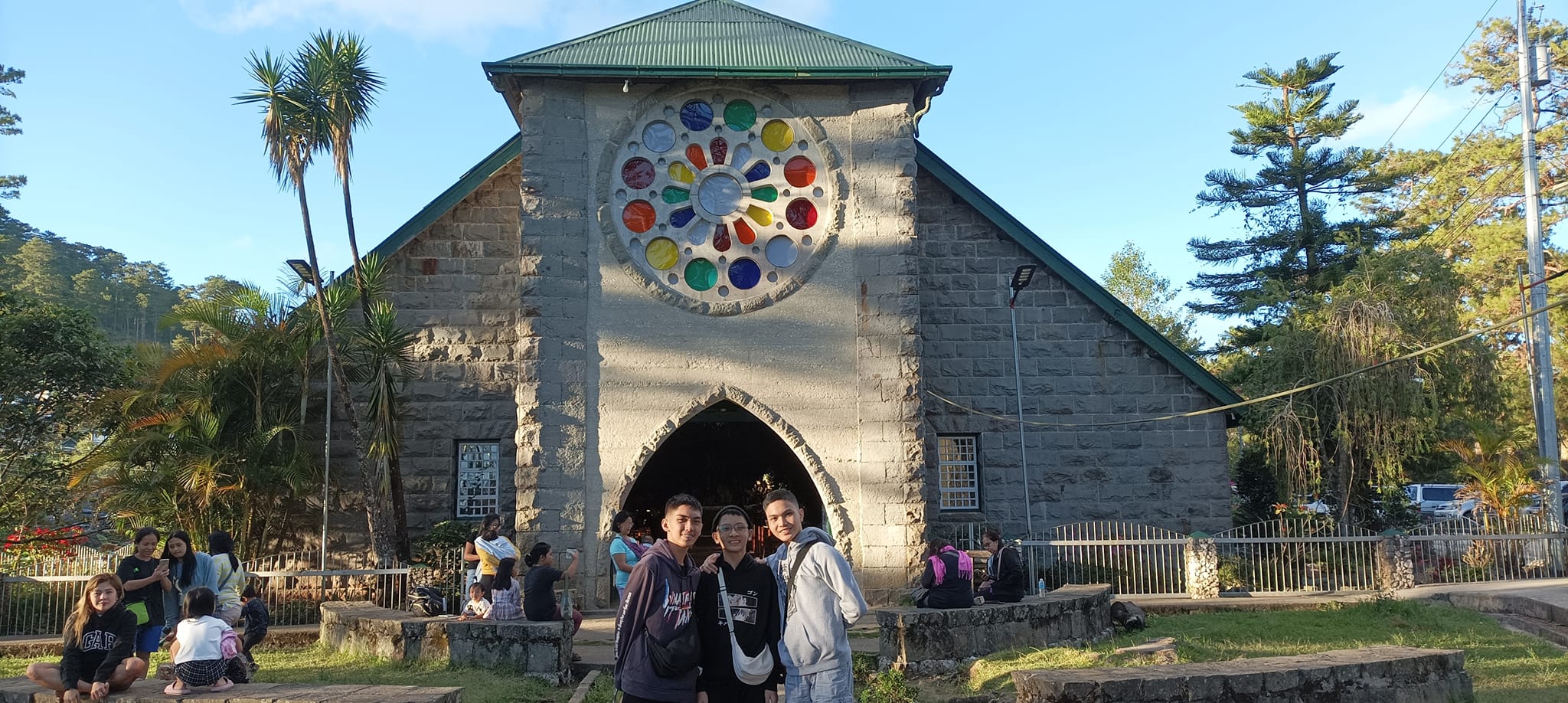
The compound was designed like a park, with benches and flowers around it, but the property leads to the steps going up the Anglican cemetery where one of the soldiers who fell victim in Mamasapano was buried.
Nico said that three of the Mamasapano victims were Igorots, but only one of the bodies was returned to Sagada to be buried in his hometown.
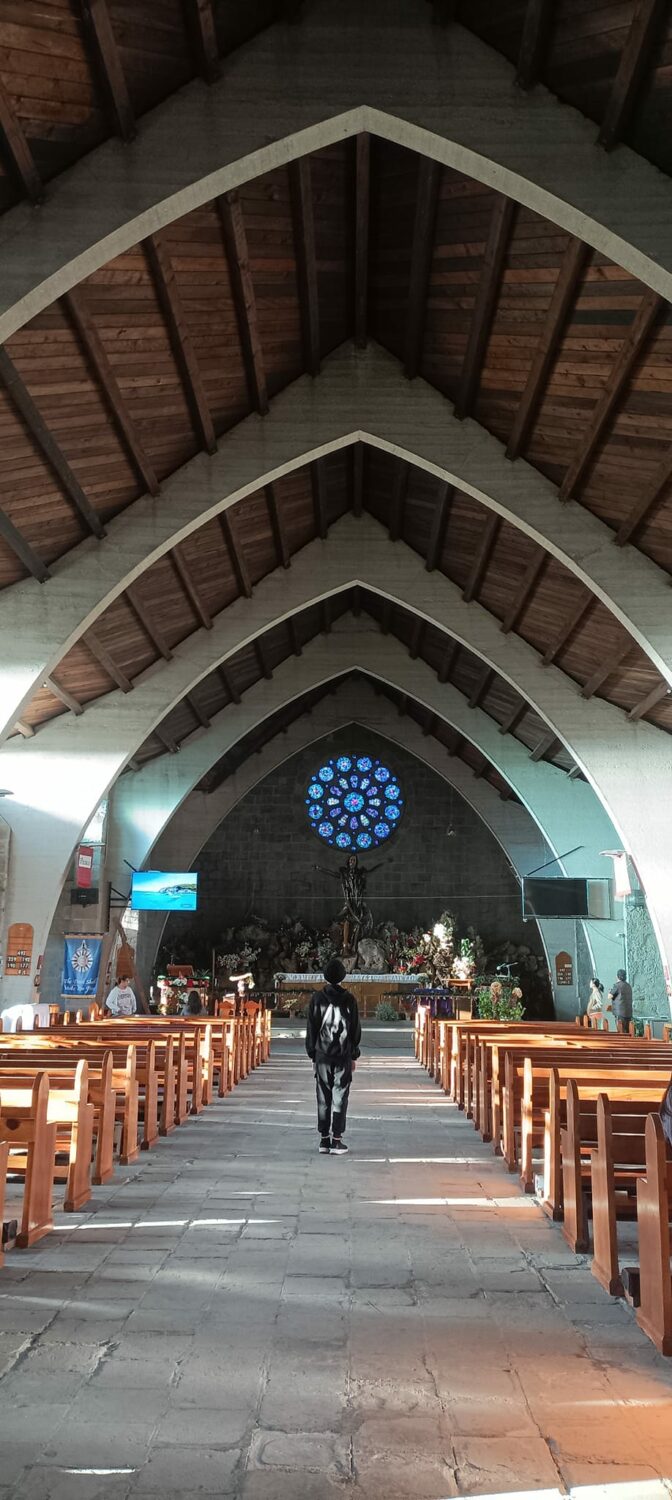
The oldest bell in Mountain Province sits in the middle of the compound. Because we passed from the back of the church, we didn’t see it right away. We actually saw it a day later when we were walking back to our lodge from Dantay road.
It’s been placed near the main gate of the compound.
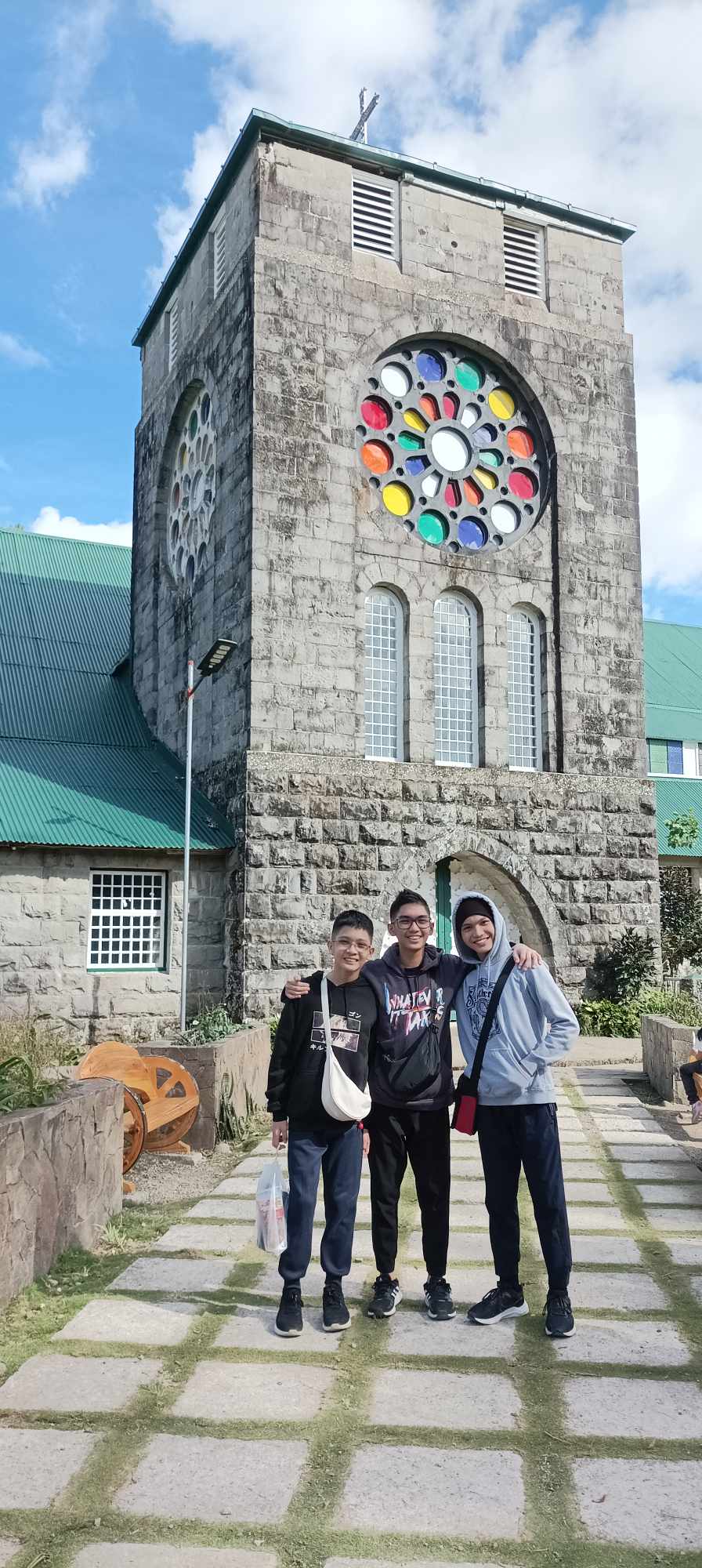
A little trivia: Did you know that the Spanish colonizers never reached Sagada? Americans were the ones who taught the locals about the Christian faith, how to bury their dead 6 feet underground, and introduced them to pottery as a way of livelihood.
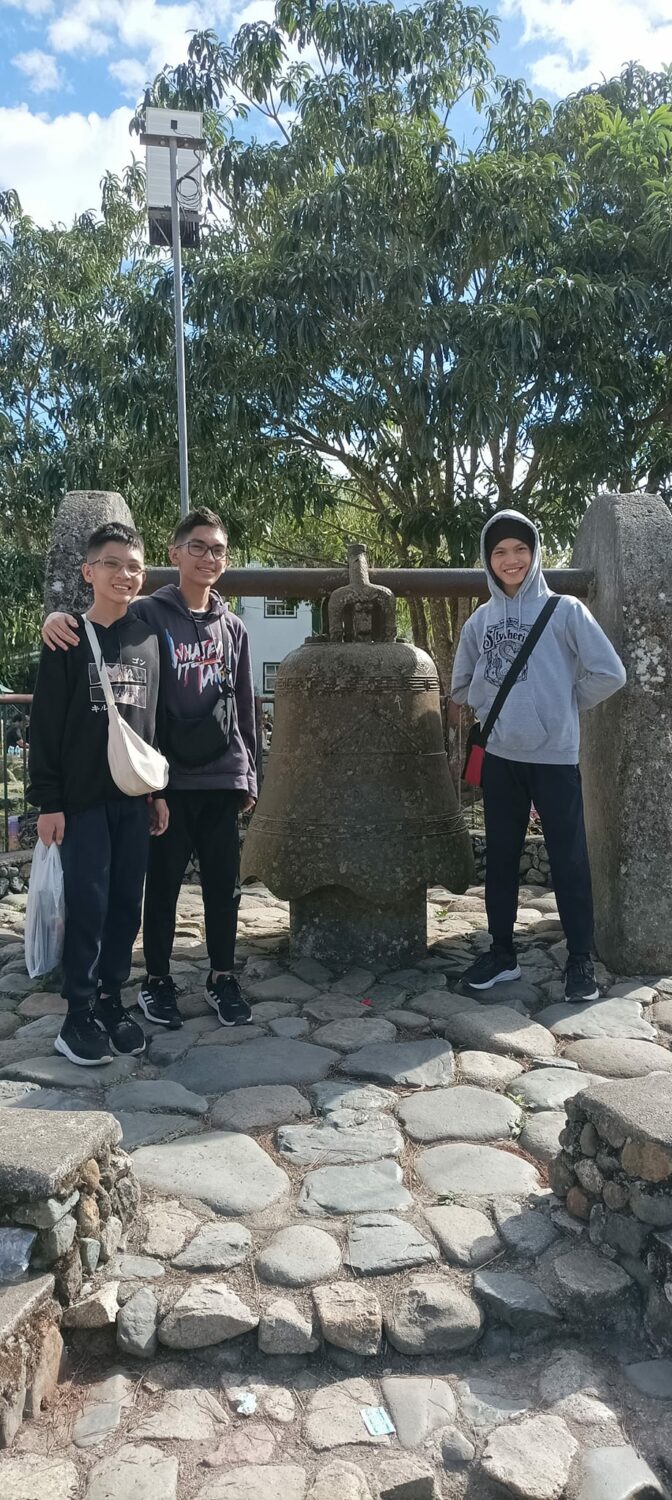
Paytokan Walk
I had no intention of seeing the hanging coffins because I felt that those are maybe too sacred for the tribes to make into a tourist attraction. I had no idea that it was part of the Paytokan Walk. All the while, I thought that the hanging coffins tour was part of the cave adventures.
But all good because Nico is a descendant from the tribe in Sagada and he seemed to like sharing this part of their culture and history with us.
We were told that the trail going up to see the hanging coffins used to be muddy and a tad difficult to take, but they have now built concrete steps and a walkway that makes it easier for tourists to go to.
The thing about Sagada is that the local government put it upon themselves to supervise the tours. I think that in this way, they are able to preserve their customs and culture, and protect their environment. No outsiders are allowed to lead any tour in the locality.
Another trivia: Did you know that all natives of Sagada are given two names? Their Christian names and their tribal name. Their Christian names are given by their parents and are written on their birth certificates, but their tribal names are given by their grandparents.
Nico’s tribal name is “Dongail.”
The Paytokan Walk began at the foot of the hill where St. Mary the Virgin church was. We had to climb up to where the Anglican graveyard was.
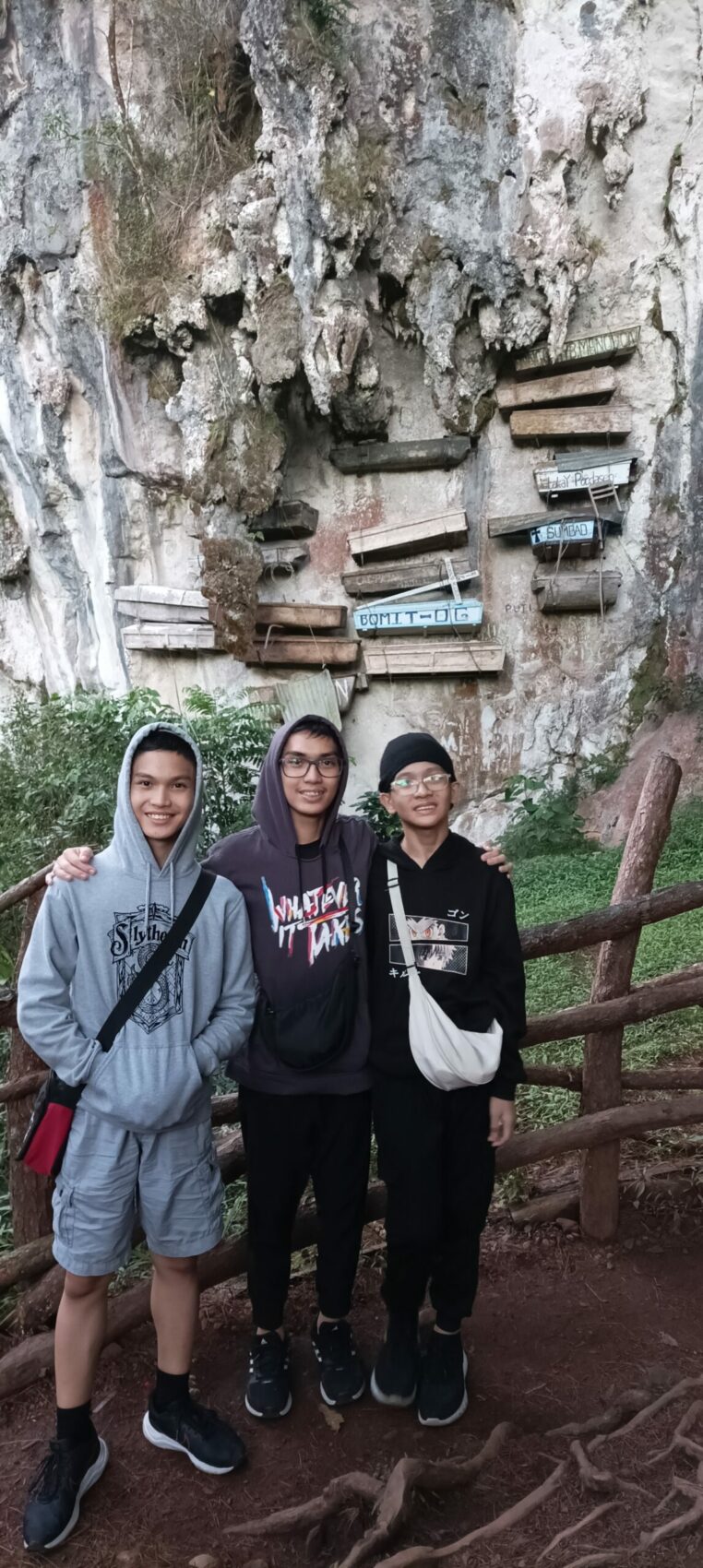
Nico said that any Sagada native can choose where he wants to be buried for free. The Americans just told them to choose any site and reserve them for themselves and for their loved ones.
According to Nico, before the Americans came, the Igorots (Sagada tribe) practiced animism and buried their dead by hanging them on the sides of the mountains. It’s not unique, he told us, as there are animists in parts of Indonesia that hung their coffins…but on trees.
The tribes men would climb up the hill and pass the coffin from one to the next, until the last man can put it in place by nail or by securing it with a rope.
Their version of a wake is having the dead seated on a chair and facing the entrance of the house as the relatives to pay their last respects. Then, they are placed in fetal position in the coffins when they are about to be buried.
Nico says that there are still locals that practice this custom burial. In fact, they still practice a lot of their tribal customs, which was later echoed by Lester, the curator at Ganduyan Museum, another Sagada native.
Ganduyan Museum
We chanced upon Ganduyan Museum while walking along Sagada road. The place is small but bursting with so much history.
According to the curator of the museum, Lester Aben, these collections have been with their family for centuries.
The National Museum offered to acquire the artifacts, and there were many others who offered them huge amounts of money to purchase the collection, but they declined all these offers, as the family believes that these artifacts –being a part of Sagada’s history and culture — must remain where they belong — with the Sagada people.
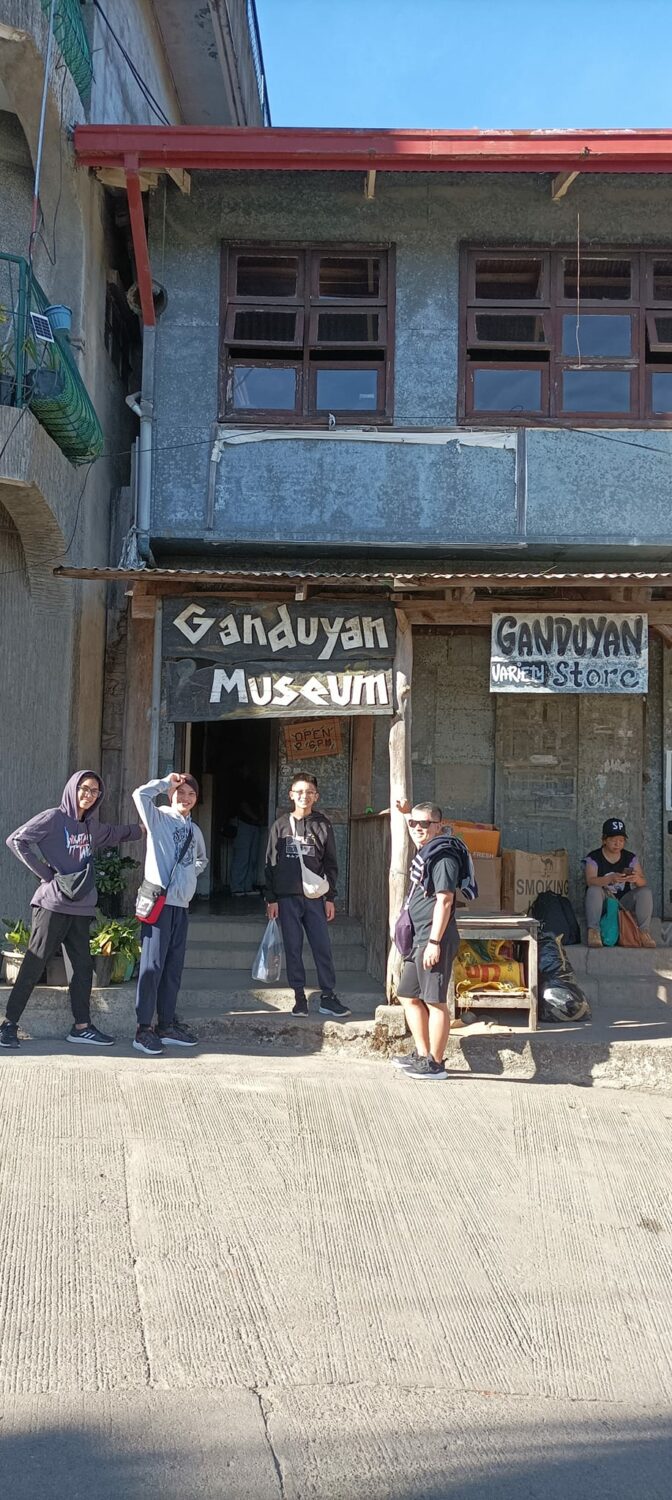
I took a video while Lester was giving us a lecture on the history of these artifacts and their tribe, but I saw a signage above that says taking photos and videos were not allowed, so I immediately turned off my mobile and simply listened to Lester’s stories which were more than fascinating.
Lester’s tribal name is “Malidom.” He talked about how peace has been achieved long ago between the Kankanai Igorots and the Bontocs who once were at war with each other.
View this post on Instagram
What I remember the most was how class was a thing in these parts. Back in the days, Igorots belonging to rich and noble families wore clothing with more intricately woven designs, while the lower class wore simple, plain-looking ones.
It went the same with other things like the bags they used, the “bahag’ their men wore…and if I remember vividly, even the plates and utensils were distinct for each class.
He also talked about the weapons and shields, and how expensive they were because of the materials used, and showed us ceramic gifts from Chinese visitors.
Did you know that Sagada was once submerged in water? This is proven by the presence of limestones in their soil and seashells in the caves in their areas.
The sitting man sculpture is supposed to guard a home, so it’s usually placed by the entrance, and the lizard is a symbol of fortune.
Lester told so many stories and I tried to hang on to everything he was saying, but my aging brain just couldn’t contain them all in one go, haha!
He wrapped up the lecture by sharing a personal story about his mom, Christina, the original curator of Ganduyan Museum. He proudly displayed her pottery and artworks, revealing how she turned to art to distract herself from the challenges of chemotherapy. Christina was battling cancer.
Our visit to Ganduyan Museum stood out as one of my favorites on the trip. Lester did an incredible job enlightening us about Sagada—the people, their customs, and all from a native perspective. Personally, it gave me a deeper appreciation for the place beyond just going through the motions.
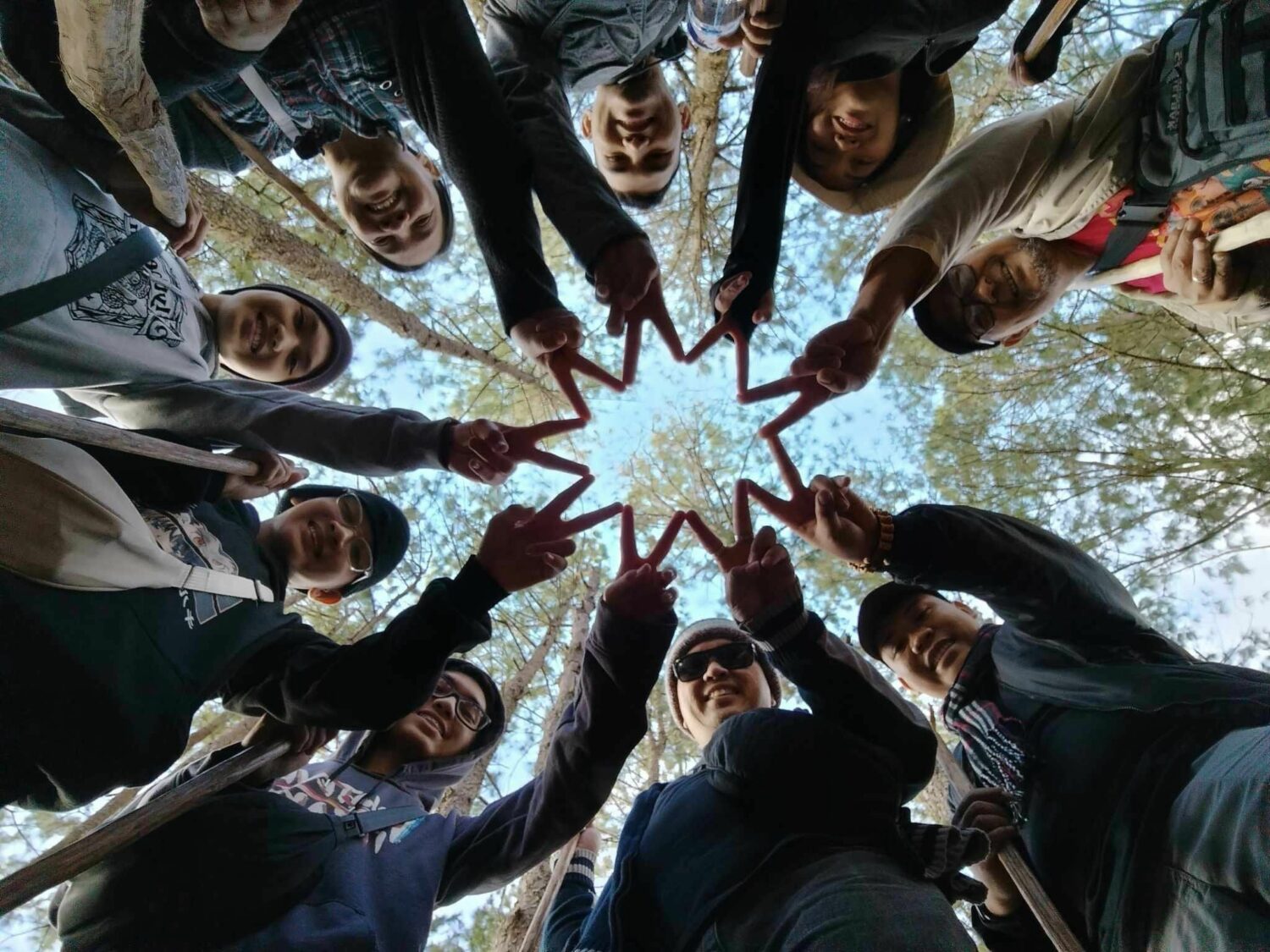
Sagada offers so much more than the hikes and treks
The truth is, I find myself thinking back on the time we spent in Sagada, and a lingering sense of wistfulness persists, as if I haven’t quite gotten my fill.
It’s funny because despite missing out on spelunking and the trek to Bomod-ok Falls, we still managed to cram a ton of experiences into those three days.
But I think it’s that.
I think it’s because we were so busy trying to get the most of the place in just a few days. I feel that we needed more time to savour the mountains or explore the forest. Maybe, we should have gotten to know more locals.
It all felt so rushed.
Maybe Sagada is more than the cold, the hiking, the trekking, the caves, and the climbing.
Perhaps, what it is, is a place to be still.


5 Comments
Kat
Hey there! Your Sagada trip account was a captivating read. I felt like I was part of your family adventure. The details about cultural sites, the regret over the cave tour, and the local government’s role were enlightening. Your yearning for more time resonated with me, making me ponder the essence of travel. Keep sharing these personal stories—they’re a joy to read!
Pingback:
Blair Villanueva
Thank you for sharing your story and experiences visiting Sagada. I admit I have never been to this place before, maybe because I’m not a too outdoorsy person. However, your story catches my attention and I believe that Sagada tells a lot of genuine stories that need to be shared. I guess I need to visit this place once I’m back in the Philippines and use the company you’ve recommended here.
Pingback:
Pingback: